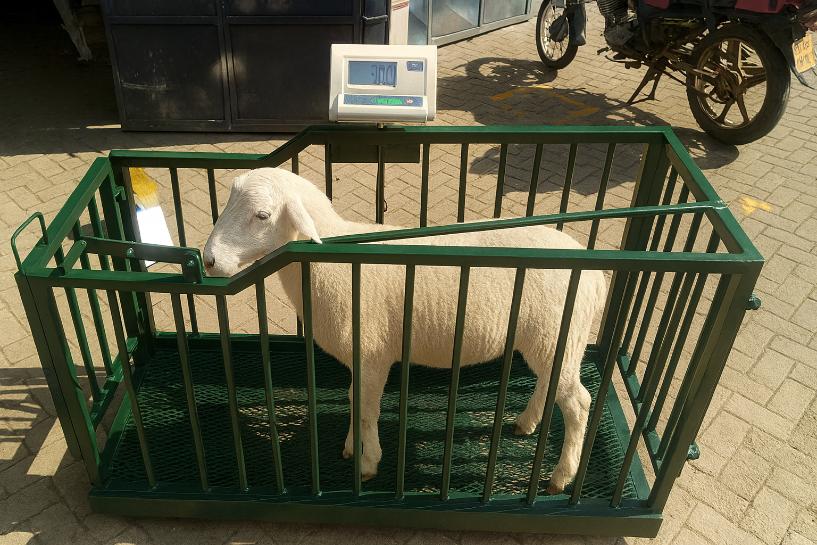Cattle Weighing Scale
How to Sell Goats and Sheep Using Live Weight: A Simple Guide for Farmers
Selling goats and sheep using live weight has become one of the fairest and most transparent pricing methods in Kenya. Whether you are a smallholder farmer or a livestock trader, understanding how live weight pricing works can help you earn more money, avoid exploitation, and negotiate confidently with buyers.
In this guide, we’ll break down what live weight means, how pricing is calculated, and why using a weighing scale — especially a Goat scale in Kenya — gives you a major advantage when selling your animals.
What Is Live Weight?
Live weight is the actual weight of the animal while it is alive. This is different from carcass weight (dead weight), which is the weight of the meat after slaughter, excluding the head, intestines, skin, and bones.
Most large livestock markets, butcheries, and slaughterhouses operate using one of two pricing methods:
-
Live weight pricing
-
Carcass weight pricing
For small farmers, live weight pricing is often simpler, faster, and more predictable — as long as you have access to a scale. Many farmers today prefer using a Goat scale in Kenya to get accurate and reliable measurements.
How Slaughterhouses Price Goat/Sheep Meat
To understand live weight sales, it’s important to know how slaughterhouses calculate value.
Currently, many slaughterhouses sell goat or sheep meat at around KSh 650 per kilogram of carcass weight. However, a live animal does not produce 100% meat. After slaughter, the animal loses:
-
Blood
-
Skin
-
Internal organs
-
Bones
-
Waste material
This “loss” is what we call dead weight percentage.
Dead Weight Percentage Explained
On average:
-
A goat or sheep loses about 50% of its weight after slaughter.
-
So a 50 kg live goat will produce around 25 kg of meat.
This is why buyers who purchase goats based on live weight cannot pay the same price per kg as slaughterhouses charge for meat. If they did, they would operate at a loss.
How Buyers Calculate Live Weight Prices
Buyers typically pay slightly lower than half the slaughterhouse price to factor in the dead weight loss and processing costs.
Let’s use your example:
Slaughterhouse price:
650 KSh per kg (meat)
Buyer live weight price:
About 295 KSh per kg
Example Goat:
-
Live weight = 50 kg
-
Live weight price = 295 x 50
-
Total selling price = KSh 14,750
This is a fair and transparent calculation because:
-
The buyer considers that only about 25 kg of meat will come from the goat.
-
The slaughterhouse will sell that 25 kg at 650 per kg.
-
The buyer still needs profit margin after subtracting slaughter fees, transport, and losses.
Why Selling by Live Weight Is Better Than Guesswork
Many farmers still sell animals using “eye-estimated pricing.” This method is risky because:
-
Buyers tend to undervalue the animal.
-
Farmers often receive far less than their animal is truly worth.
-
Disagreements arise because there is no objective measurement.
Using a scale eliminates all these issues and ensures transparency. This is why more farmers are investing in a Goat scale in Kenya to ensure they never get underpaid.
Benefits of Using a Scale When Selling Goats or Sheep
1. Accurate Pricing
A weighing scale tells the true live weight of your animal. No guesswork, no approximations. You know exactly how much your goat or sheep weighs, and you calculate your price accordingly.
2. Fair Negotiations
When you present a verified weight, buyers cannot undervalue your livestock. You negotiate based on a real number, not perception.
3. Increased Earnings
Many farmers unknowingly sell animals at lower prices because buyers estimate weight. With a scale, you can easily earn 20–40% more per animal.
Example:
A buyer may estimate your 50 kg goat at 35 kg and offer KSh 10,000.
With a scale, you prove it weighs 50 kg and you earn KSh 14,750 — a big difference.
4. Builds Trust With Buyers
Buyers appreciate dealing with farmers who use scales because:
-
It speeds up the transaction
-
It reduces arguments
-
It makes every deal professional
This helps build long-term relationships.
5. Better Farm Management
Knowing the live weight helps you track:
-
Animal growth
-
Feeding efficiency
-
Expected market value
-
Breeding performance
You can decide the best time to sell, maximizing your profit.
How to Start Selling by Live Weight
-
Acquire or access a weighing scale suitable for goats and sheep — a modern Goat scale in Kenya is the best option.
-
Weigh your animals in the morning when they are calm.
-
Multiply the weight by the current live weight price (e.g., 295 KSh/kg).
-
Present the weight and calculation to the buyer.
-
Agree on price and complete the sale confidently.
Selling goats and sheep using live weight is the most transparent, fair, and profitable method for farmers. By understanding how pricing works — especially the difference between live weight and carcass weight — you’re in a stronger position to negotiate and earn the correct value for your livestock.
Using a weighing scale, particularly a reliable Goat scale in Kenya, gives you accuracy, trust, and higher earnings. Whether you sell occasionally or manage a larger operation, live weight selling is a smart business move.

